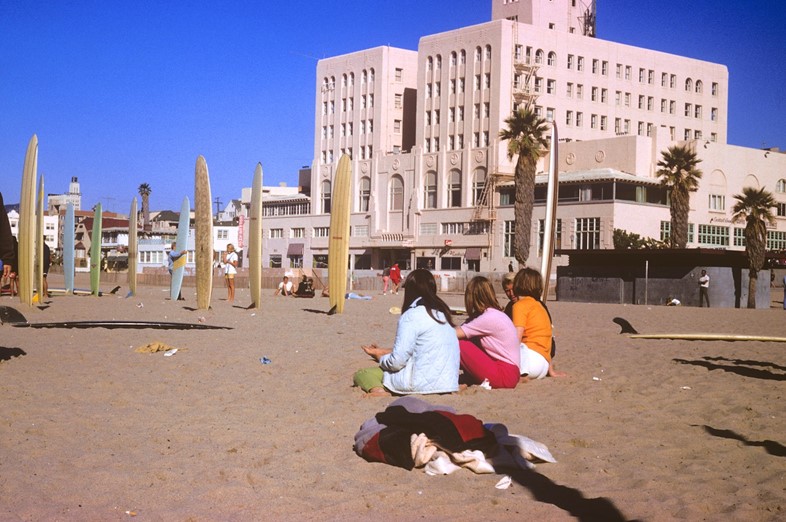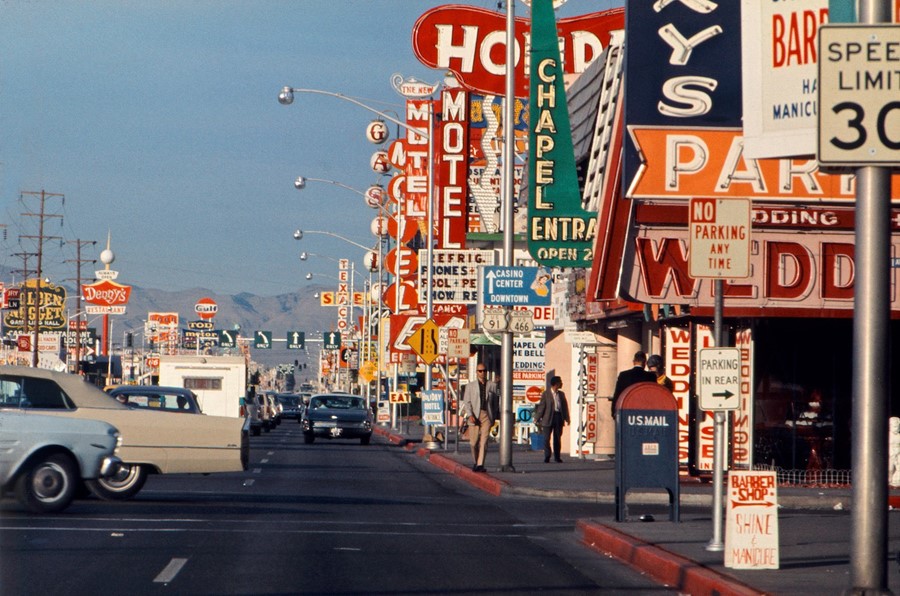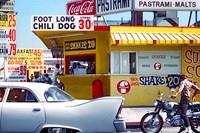As an exhibition of her photographs closes in London, we pay long overdue lip service to Denise Scott Brown
Who? In the best known photograph of Denise Scott Brown she stands, formidable against a Las Vegas backdrop – chimney, neon ‘Dunes’ sign and faint blue sky – in an outfit that brings to mind Phoebe Philo’s Céline. She’s incongruous, and she looks like she’s in charge. It’s not a bad encapsulation of the approach that has defined her career; a measured radicalism, a steady conviction that she was onto something, and, most crucially, a commitment to Las Vegas. Now in her eighties, Scott Brown grew up in South Africa and studied there before eventually completing her degree at the University of Pennsylvania. Although she’s ostensibly an architect, her work has spanned urban design, theory, criticism, writing, filmmaking and photography, and she’s often adopted an ethnographic approach more typically associated with anthropology. In short, she’s original.
In the late 1960s she co-authored the seminal Learning From Las Vegas with her husband Robert Venturi, who she met while teaching, and Steven Izenour. This work, which argued that the ‘pop landscape’ was as relevant to contemporary designers as ancient Rome had been to previous generations, is now widely credited as one of the foundations of Postmodern architecture. A pioneer of the belief that high and low culture are equally relevant, Scott Brown had a distinct lack of fear of being regarded as frivolous; in the late 70s she began designing furniture with Venturi for Knoll, including a chair upholstered in a floral print that they named ‘The Grandmother’ (fitting given that she’s also on occasion called herself ‘an architectural grandmother’).

What? Photography has been critical to Scott Brown’s practice; she used it both to document her surroundings, and as a tool for analysis. Wayward Eye, the recent simultaneous exhibition between Betts Project gallery and Central Saint Martins’ Lethaby Gallery, initiated and co-created by PLANE—SITE, Betts Project and Jeremy Eric Tenenbaum, brings together a selection of the photographs she took between 1956 and 1966, in the first solo exhibition of Scott Brown’s photographs in the UK.
Taken in the period just prior to her work on Learning From Las Vegas, these photographs are valuable both as an insight into her work, and as standalone photographs; they make the case that she’s as much a photographer as an architect. She managed to capture the complexity of America as the late 1950s became the 60s: simultaneously sprawling and dense, streets busy with ornamentation and mass media symbolism are juxtaposed against vast, still roads. She was fascinated by street signs, and in these photos we can read what she’d later describe as her “love affair with neon”. There’s a dynamism to these photos that conveys an excitement for the new layered on top of the old.

Why? Scott Brown has been outspoken about her outsider stance, both as a foreigner in the US who didn’t subscribe to received European design wisdom, and as a woman in an historically male-dominated profession. Her work was oft-sidelined by critics, and while her husband was canonised, the recognition for her achievements has come more slowly. This was most tangible when he was awarded with the prestigious Pritzker Prize in 1991; many of the buildings cited by the judging panel as Venturi’s achievements had been designed in collaboration with Scott Brown. A 2013 petition to retroactively award her with the prize, coordinated by a group of women from the Harvard Graduate School of Design, didn’t move the jury to reconsider, but the 20,000 signatures gathered speak to her enduring popularity. Her work remains relevant because it was aesthetically radical, but also because it was socially minded, and informed by ordinary people. As she once wrote: “If high style architects are not producing what people need, who is, and what can we learn from them?”






